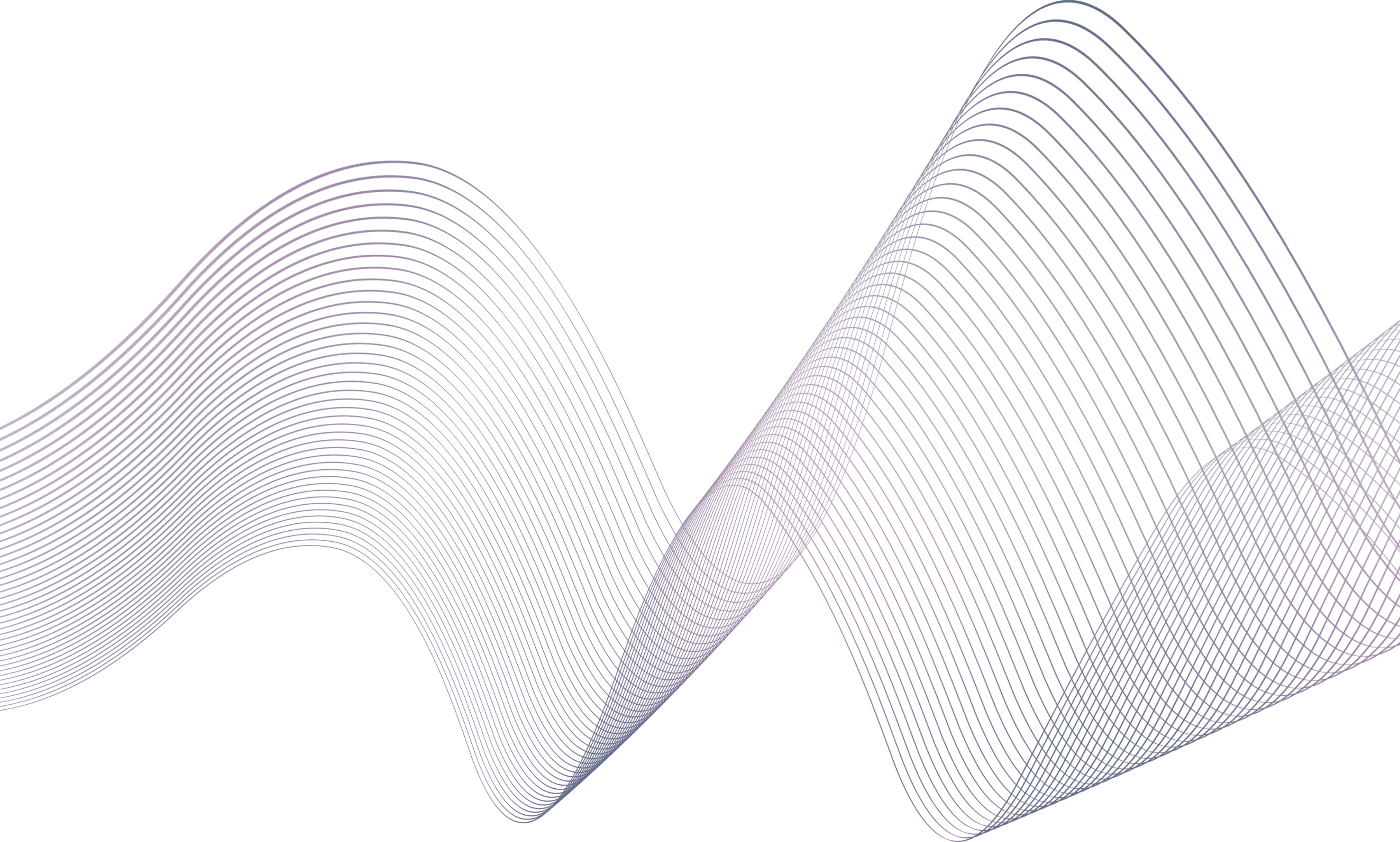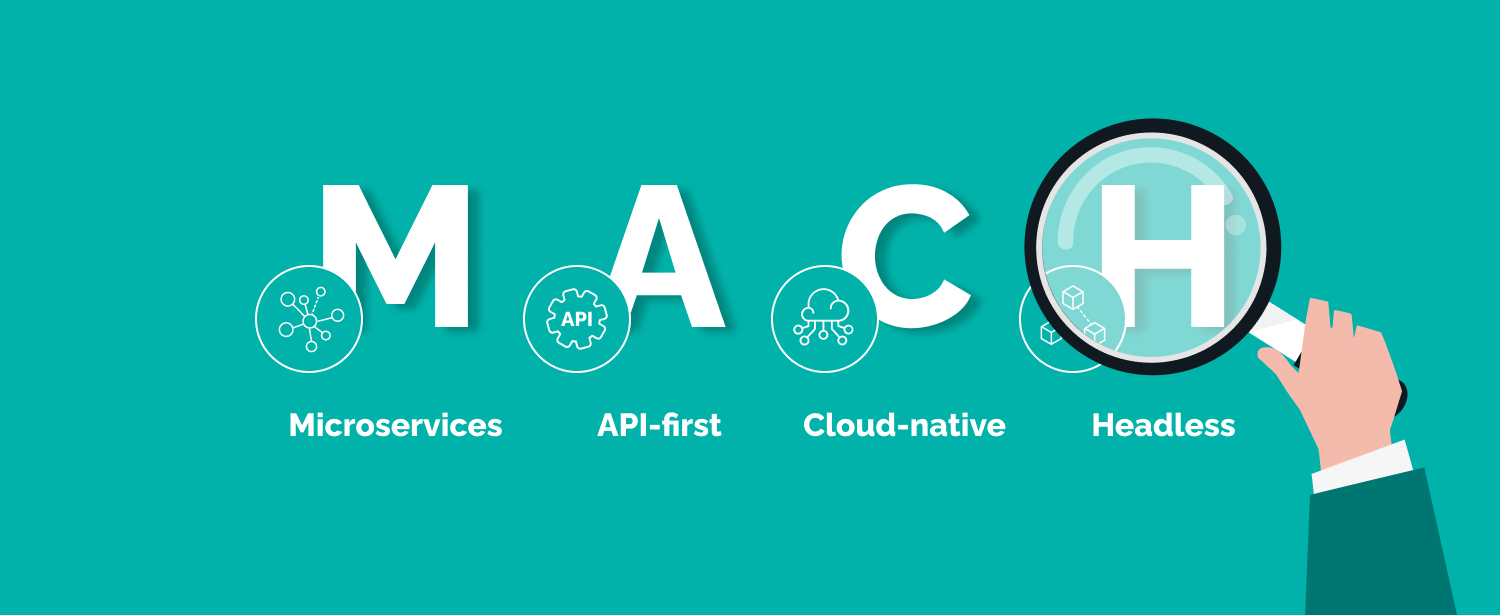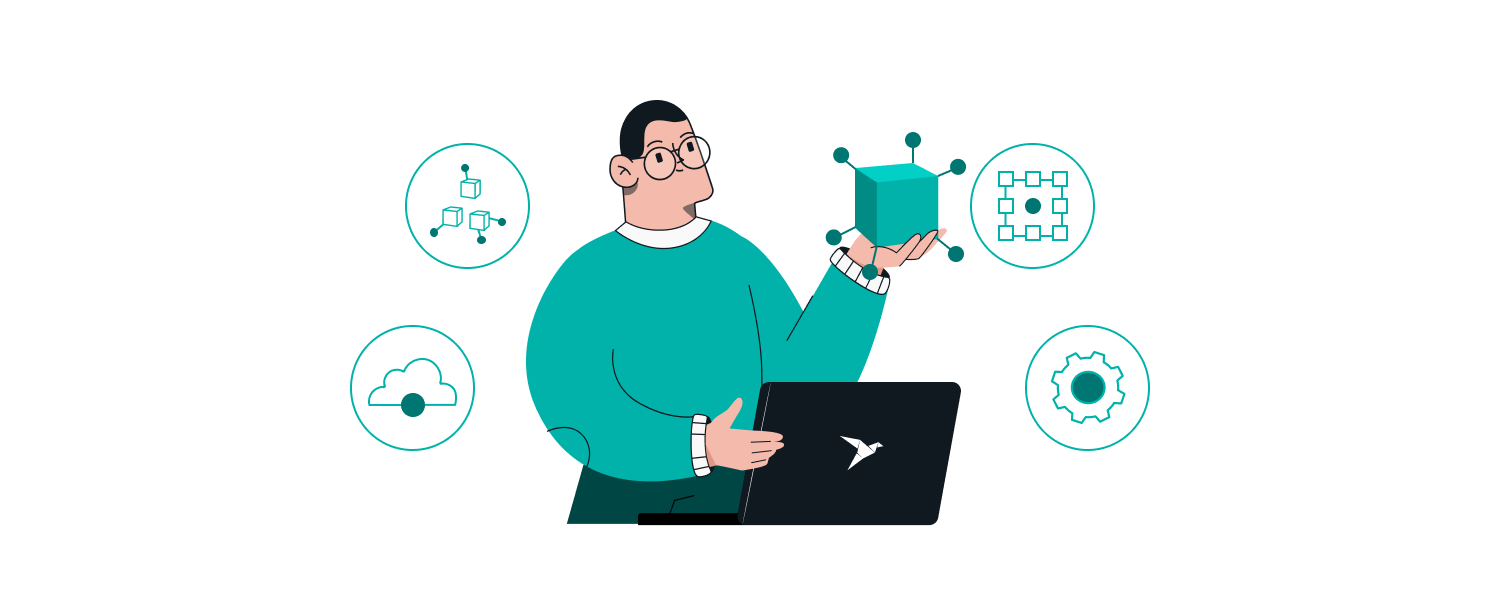
MACH Architecture for Ecommerce: Microservices, API-First, Cloud-Native, Headless
WEB DEVELOPMENT, INFRASTRUCTURE.
The digital paradigm has shifted dramatically in recent years, as companies are breaking free from traditional monolithic Ecommerce platforms in order to stay ahead of the curve and deliver an excellent customer experience.
MACH (Microservices, API-First, Cloud-Native, Headless) enables Ecommerce platforms to be more agile, flexible and innovative in order to meet demanding consumer expectations.

This new technology for Ecommerce allows companies to create a niche online market for their business, called composable commerce, by being able to develop a feature-rich solution for customers.
Composable commerce: What it means
Composable commerce means being able to market services or products online through platforms or architectures made up of interconnected and interchangeable blocks that can be easily adapted to new needs.
Composable architecture
When a company selects and adopts the best technological solutions available in the market to execute composable commerce, it is creating a composable architecture. In other words, a composable architecture is created by choosing the best components required.
In the past, companies adopted enterprise suites or created customized solutions to meet their needs, making it quite complicated to keep these monolithic applications up to date. For this reason, this approach is no longer the most convenient option.
In contrast, composable architecture is the opposite of monolithic software hosted on local networks, because it encourages the adoption of first-tier technologies available on the Internet. An excellent choice for composable commerce is the MACH architecture.
Composable architecture enables faster, more secure and reliable digital experiences compared to the traditional enterprise software approach.
Why adopt composable architecture?
Today, forward-thinking companies are looking to create modern and advanced solutions based on web experiences.To do so, they adopt the most innovative technologies, putting the shopper experience as a priority, especially when it comes to an omnichannel approach.
In this scenario, a monolithic suite that is cumbersome and slow to evolve is no longer useful. That's because it doesn't deliver what teams require to keep up with constantly evolving customer needs. Instead, composable architecture makes delivering new functionality faster and easier.
Additionally, with composable architecture, problems and concerns can be divided, because each team can focus on what really matters, allowing the business to thrive. This aspect is possible thanks to the headless model.
What is MACH architecture?
The MACH architecture uses four recent technological advances as principles: Microservices, API-First, Cloud-Native and Headless, becoming the new paradigm for Ecommerce. These principles are what allow a company to enter the world of composable commerce.
This architecture has parallels with the service-oriented architecture, considerably modernizing its concept by offering an excellent online shopping experience on multiple devices.

Microservices
The MACH architecture is made up of applications from multiple vendors, ultimately creating a complete solution. The purpose of each microservice is to execute a single task, such as payments, product search, wish lists, etc.
Microservices provide flexibility, scalability and resilience in Ecommerce structures, because each functionality is developed, implemented and managed independently.
API-first
It is the connecting fabric of a MACH architecture. The Application Programming Interface (API) communicates the various microservices of the system with each other so that all components can function harmoniously.
APIs create a framework of interfaces that masks the complexity that exists in a modern Ecommerce architecture, making it easy to use.
Cloud-Native
This model refers to software hosted exclusively in the cloud, so it does not require installation or maintenance, since updates are performed automatically, without the Ecommerce company having to do it.
The Cloud-Native architecture gives companies virtually infinite scalability, because providers have everything ready to use.
It is the ideal solution to meet the changing needs of a company, providing agility and innovation.
Headless
This approach is based on decoupling the frontend from the backend in an Ecommerce solution, with both being connected by an API, to allow development teams to create personalized online experiences, without hindering the backend.
By providing a high technical level of flexibility, this architecture makes it possible to create a platform that meets business needs and customer expectations.
Advantages of MACH architecture
MACH is beneficial for companies that want to stay ahead of the curve while adapting to changing scenarios.
With a traditional monolithic architecture, companies are restricted to relying on a single system that handles everything. In contrast, MACH allows companies to choose the best available technologies and platforms for each functionality, thus delivering a superior customer experience.
Reduces time to market
Developers can implement prototypes quickly, testing key concepts before investing in larger scale implementations, saving time and money.
It has the best set of tools
The MACH architecture makes it possible to have customized IT systems, based on the best technology available on the market. Companies no longer have to settle for less when it comes to software packages, because they can add, test and remove specific services at any time.
Automatic updates
Under monolithic technology structures, companies are subject to constant software upgrades, which can become costly and inefficient.
The MACH architecture provides automatic and uninterrupted releases by ensuring that its code and the company's code are separated. This makes it easy to add, replace or remove software on an individual basis. All updates are automatic and do not interfere with system integrity.
Customization and innovation
The ability of the MACH architecture to constantly change gives companies the freedom to change and adapt, depending on market requirements.
With the agility provided by the MACH architecture, companies can make instant changes to keep up with their customers' requirements.
Disadvantages of each principle
Microservices
Its weakness lies in its orchestration. That is, if microservices are loosely coupled, the crash of a microservice could cause a cascading effect on its integration points.
To implement and maintain a microservices-based architecture requires a team of developers, increasing operational costs. In addition, bottlenecks may be created due to its complexity.
API-First
Implementation requires the availability of a development team, increasing operational costs.
Also, API-First does not mean that the API is well designed, so the technical team must evaluate the API and its design decisions well.
Cloud-Native
Its disadvantage is that it turns out to be a black box, and it can be difficult to determine where the bugs and flaws are. This could be addressed by certifying that its features are flexible, integrations are simple and the product is well documented.
In addition, security is not in the hands of the company, and must be managed independently by each vendor you choose to use.
Headless
It increases costs, having to purchase and integrate an interface, or build it from scratch. However, it can be more time-consuming to create a traditional grid-based template, compared to a template-based Software as a Service (SaaS).
Contact us
Aplyca specializes in modern solutions to meet the needs of large-scale digital commerce. See our results and contact us to discuss your project needs.